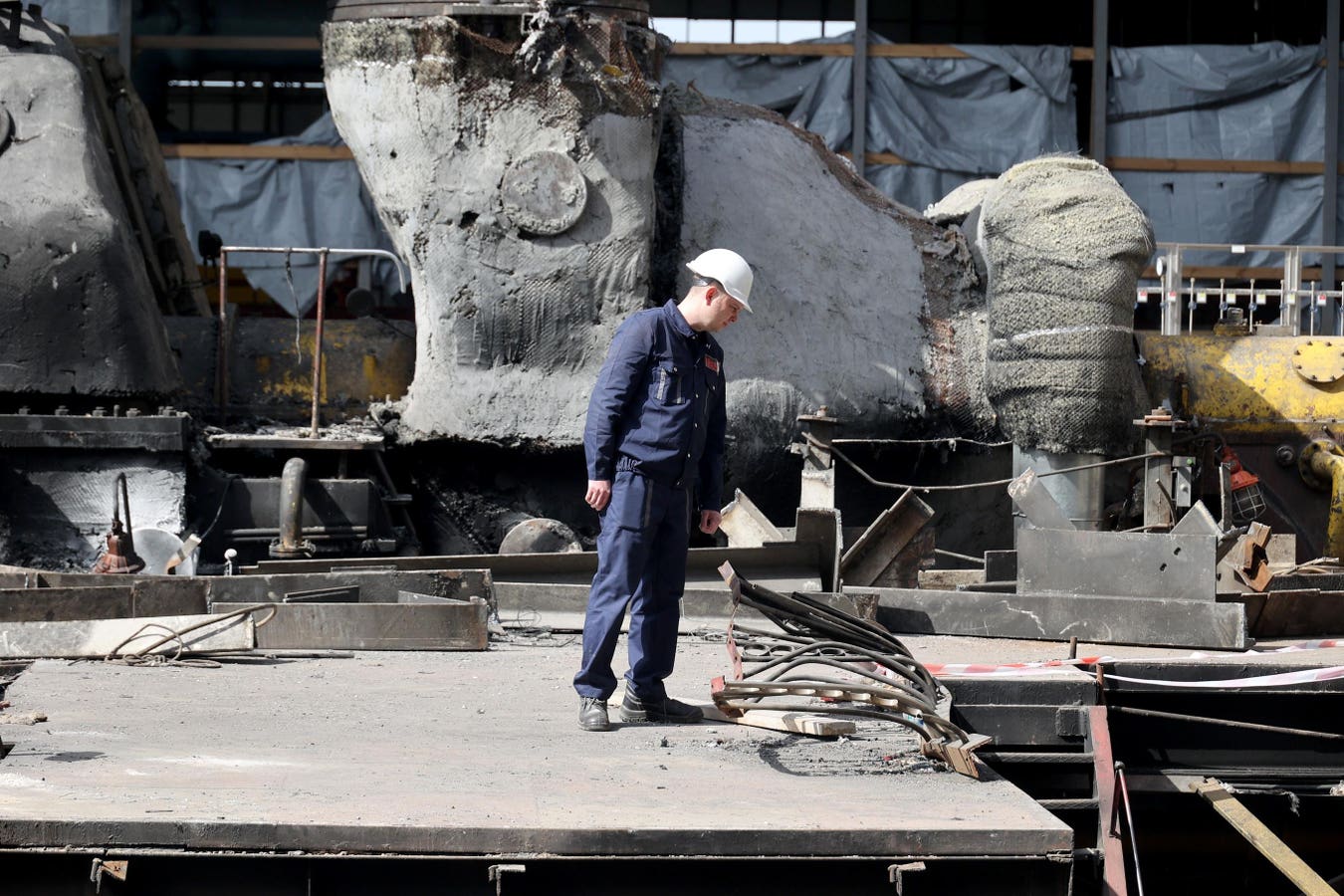This photograph shows poles for electrical power distribution during a massive power cut affecting … More
On a sunny afternoon in April, a massive power outage swept across the Iberian Peninsula. Millions were left in the dark while businesses closed, travelers were stranded, and communication lines were cut. The diagnostics are still pending, but this incident has sparked a conversation about which fuel sources are best suited to guide us as artificial intelligence and data centers experience rapid growth.
Renewables are essential, and their ability to support AI and data center growth is improving due to advancements in energy storage, grid intelligence, and demand-side innovation. However, for the foreseeable future, we must integrate clean energy sources with natural gas to ensure reliability. While green power and nuclear energy will be the backbone over time, the most optimal approach is to combine them right now.
“Thanks to a massive increase in the adoption of renewables and utility-scale battery storage in the U.S., along with the emergence of grid-enhancing technologies, our grid is better equipped to handle these stressors than it was just 5 years ago,” says Jim Spencer, chief executive of Exus Renewables North America, in an email exchange. “Renewables are essential for powering AI data centers to keep up with rapidly increasing demand, keep costs low, and drive the next wave of economic innovation.”
Political partisans blame competing energy sources for previous power outages. Inevitably, advocates of traditional fuels emphasize that wind and solar energy only function when weather conditions allow, necessitating backup from batteries or natural gas, which incurs additional costs.
In this context, renewables provided 70% of the energy during the Iberian Peninsula blackout. However, this outage cannot be attributed to wind and solar but rather to the grid’s inability to respond quickly to unexpected issues. Two significant power losses occurred at substations in southwestern Spain, causing a sudden drop in power supply and affecting the grid’s voltage and frequency—the heartbeat of the grid.
According to Spencer, green energy is the cheapest and quickest to integrate into the network. It works effectively alongside additional support systems like batteries, demand response, and fast-starting natural gas generation. Indeed, battery costs have dropped by more than 85% since 2010, which has improved reliability. Renewables can be co-located next to modular data centers.
“We must understand commercial readiness and cost,” relative to when data centers come online,” adds Ron Schoff, director of R&D for EPRI, during a United States Energy Association virtual press event I participated in. “Our big challenge is that data center demand is coming between now and the next two to three years,” noting that the system must be able to respond to rapid changes in supply and demand for electricity.
Technically Superior Wind Turbines And Solar Panels
TOLEDO, SPAIN – 2022/09/09: The full Harvest Moon rises over wind turbines of a wind farm with a … More
Consider Wind Harvest, which claims its turbines are technologically superior and designed to operate in the harshest conditions. Because its turbines continue functioning when others fail, they can generate electricity even during storms or grid stress, preventing blackouts and maintaining grid stability.
The company states that its wind mills are unique because they are vertical and closer to the ground than conventional tall horizontal turbines. Because they rotate around a vertical pole, they can handle wind from any direction. They can also operate in gusty and choppy conditions, often near the ground, where other turbines struggle.
“No one has yet made a turbine that can handle the gusty, turbulent conditions near the ground,” says Kevin Wolf, CEO of Wind Harvest, during the press event. “They didn’t have the aeroelastic modeling. Our turbines can then be integrated into these wind farms, allowing for the establishment of an AI data center in California or other windy locations near the ground. We can utilize the wind when it blows and also when it is calm. This opens up an entirely new resource.”
As it stands now, renewable energy must work with other fuels to meet AI data centers’ urgent and high demands. These centers have enormous power requirements and cannot afford to go offline, necessitating high-quality and affordable battery storage or backup solutions, such as natural gas units that fire up instantly.
Meanwhile, AI is advancing, and various clean energy technologies—including long-duration storage, clean hydrogen, and small modular nuclear reactors—are not yet scalable. This leaves natural gas and large nuclear plants to run 24/7 to power AI data centers. The Trump Administration promotes coal for this purpose, although it cannot compete without substantial subsidies or regulatory favors. Coal is also inflexible and slow to ramp up, making it a mismatch.
“In a global marketplace increasingly challenged by seemingly infinite power demand driven by AI, we need an all-of-the-above approach to energy generation that expands the definition of renewable energy. This means renewable power that’s always on, locally deployable, and designed to scale. Organic waste streams hold untapped energy,” says Cornelius Shields, founder of Kore Infrastructure, in an interview.
The Utility Sector’s Mission Is Reliability
LAS VEGAS, USA – JANUARY 06: Nvidia CEO Jensen Huang addresses participants at the keynote of CES … More
The utility sector aims to provide reliable power at the lowest rates possible. This commitment contradicts coal’s qualities, which is not just dirtier but also more expensive than renewables or natural gas. Most U.S. coal plants are decades old, and retrofitting them is too costly. Utilities make long-term decisions based on 20–40-year cost projections, while coal’s market prospects continue to decline.
Energy consumption is set to soar over the next 5 to 10 years due to the push for decarbonization and electrification and the growth of AI and data centers. To meet this challenge, we need modern grid technologies that can expand the network’s ability to handle the increased demand for electricity. At the same time, we must retire aging coal, nuclear, and natural gas plants that have been in service for four decades. Welcome, renewables, which are stepping up; solar and battery storage accounted for 81% of the electric generation capacity additions last year.
Major AI companies like Google, Microsoft, and Meta have committed to operating entirely on renewable energy. This initiative responds to investor and regulatory pressure to reduce emissions and improve environmental footprints. AI data centers can be co-located in renewable-rich regions, alleviating stress on the central network.
Guess what? Roughly 260,000 megawatts of power are poised to join the U.S. grid—more than double the current output from power plants. And here’s the reality: according to the Lawrence Berkeley National Laboratory, 95% of this power is generated from solar, wind, and battery storage.
“It boils down to the power grid,” says Jason Huang, CEO of TS Conductor, during the virtual press event. “We do not have enough capacity in the power grid. There are plenty of bottlenecks. We have the next-generation advanced conductor available—ready to be deployed on a large scale to address that issue, in a way that brings you affordability.”
Unfortunately, the blackout in the Iberian Peninsula is not an anomaly but rather a consequence of regulatory inadequacies, grid technologies, and extreme weather events. Adding electricity demand to these existing dynamics only heightens the challenges and opportunities, necessitating greater research and development in cutting-edge grid and energy technologies. The ultimate goal is to ensure that the clean energy supply can meet the real-time demands of data centers.








